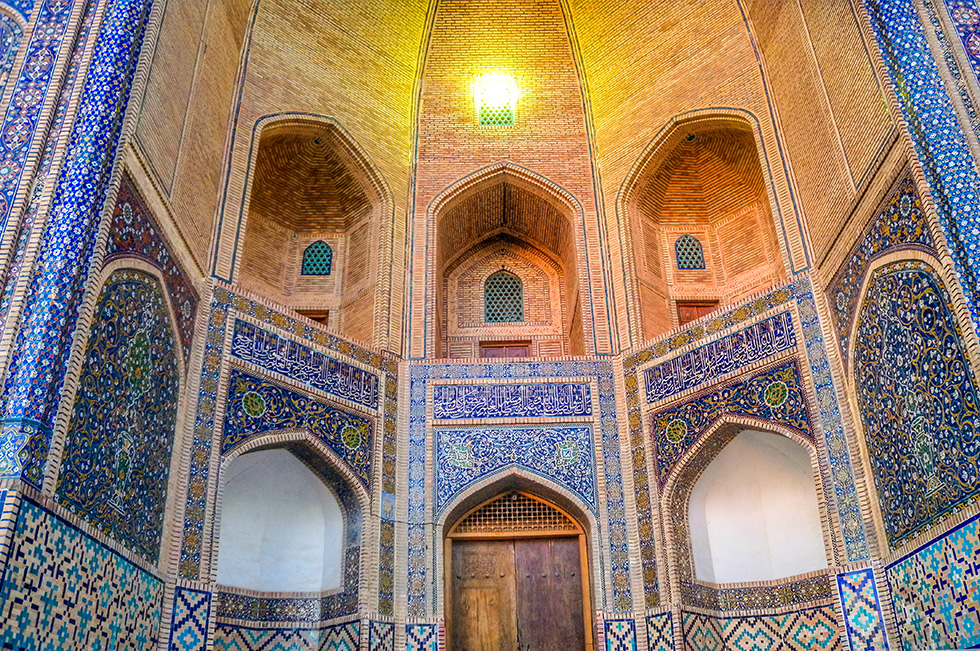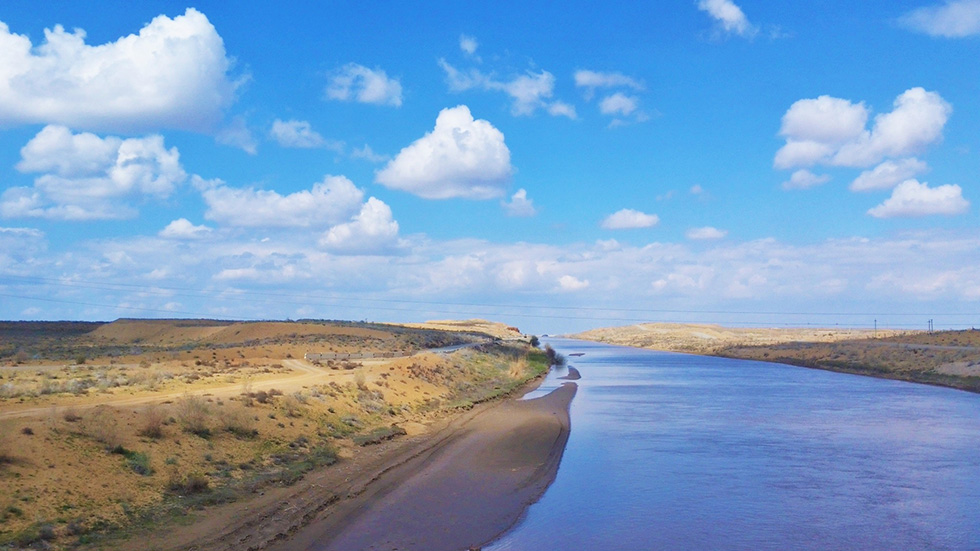ABOUT UZBEKISTAN
By Sophie Ibbotson
In his famous and much-quoted poem The Golden Road to Samarkand, James Elroy Flecker’s characters describe moonlit cities, the heat of the winds, shadows cast on the sands, and the silent air of the desert. The reader is swept along in their timeless caravan, sharing in the atmospheric journey. Uzbekistan captures the imagination like almost nowhere else. The country is synonymous with the Silk Road, and three of the greatest Silk Road cities – Samarkand, Bukhara and Khiva – all lie on Uzbekistani soil. The people, ideas and goods which travelled along the Silk Road have left permanent marks on Uzbekistan’s landscape, culture, and the genetic make-up of the population, creating a diverse destination with layer upon layer of identities.


Uzbekistan is a country with a rich, fascinating past. This land has been continually inhabited since Neanderthal man first walked across the steppe and took refuge in the Gissar Mountains. His Stone Age descendants carved their marks in caves and on rocky outcrops, and by the 1st millennium BC Iranian nomads had settled the grassy plains, planted crops, and built rudimentary irrigation channels. In their wake came waves of invaders: Scythians, Achaemenids, Greeks, Arabs, and Mongols. Each group built palaces, fortresses, and places of worship and of trade, attempting to eclipse both physically and in public memory whatever had been there before.
The constant cycle of construction and destruction had a significant impact on what we see in Uzbekistan today. The buildings which survive are those which, by dint of good fortune, have avoided both the attention of marauding hordes and equally destructive natural disasters. Well into the 20th century the Soviets were levelling ancient buildings to make way for architecture which was better in keeping with their ideology. To a lesser extent, the same is also true of the post-independence period. Restoration projects, some more sympathetic than others, have raised mediaeval buildings like phoenixes from the ashes.

Man’s impact on the natural environment is clear in Uzbekistan, too. The taming of the Amu Darya and Syr Darya rivers and the construction of irrigation infrastructure has made it possible to farm land which otherwise could not support intensive agriculture. However, in the race to cultivate more land and produce greater quantities of cotton, the ecosystem has become unbalanced: the Aral Sea has already retreated beyond the level from which it is recoverable and stretches of once fertile land are turning to desert. Farmers are now actively diversifying their crops, planting those which are less water-intensive, and there’s a shift in the economy away from the production of raw materials to more profitable parts of the value chain.
In many ways, Uzbekistan is at a crossroads. This applies, as it has always done, in a physical sense, as the country lies in the heart of Eurasia, but it is also true culturally, economically, and politically. Uzbekistan is successfully pursuing a multi-vector foreign and trade policy, strengthening its relationships with neighbouring countries and better integrating with international markets. Increasingly, it is seen as a regional power broker and facilitator, hosting events such as the Central and South Asia Regional Connectivity Summit in 2021, the Shanghai Cooperation Organisation (SCO) Leaders Summit in 2022, and the European Bank of Reconstruction and Development (EBRD) Annual Meeting in 2023. History has shown that Uzbekistan is at its greatest when it has a symbiotic relationship with its neighbours, when people, ideas and goods flow back and forth, enriching society. After a period of relative isolationism, it is returning to the world stage. Since 2016, the country has grown in confidence and influence, actively courting foreign governments, businesses and tourists to visit, collaborate, trade and share the finest aspects of their respective societies for mutual benefit.
